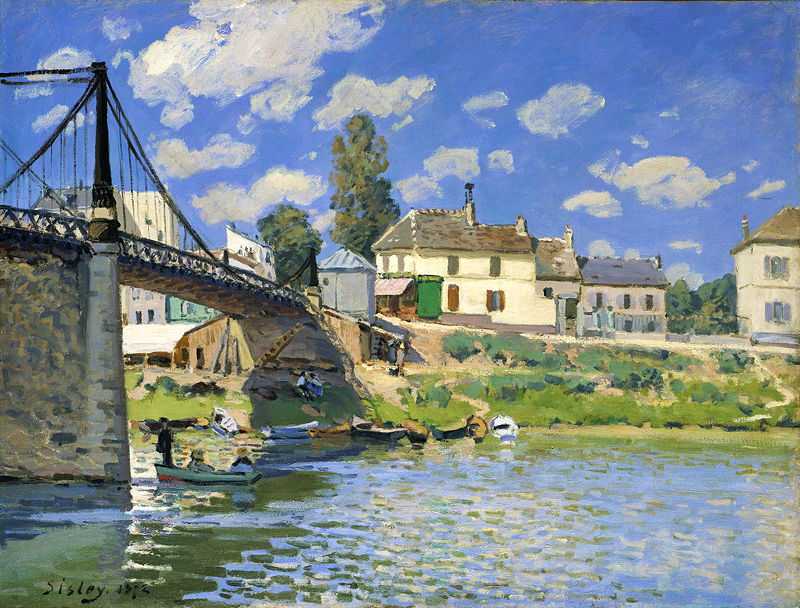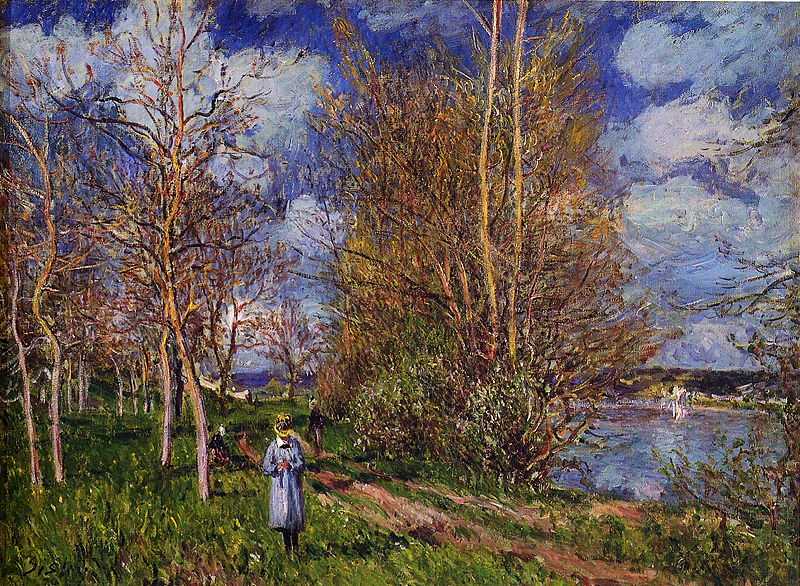1. Chronology of Alfred Sisley's Life
Early years
30 October 1839: Alfred Sisley is born at 19 rue des Trois Bornes, Paris to English parents (and a French grandmother); he is the youngest of four children. Sisley's father is a merchant running an import/export business.
1857-60: Aged 18, Sisley moves to London to study commerce and to improve his English. He visits the National Gallery and studies works of John Constable and JMW Turner such as the Hay Wain and The Fighting Temeraire. He may also have studied the French Barbizon school, and Camille Corot in particular, whose works were starting to be exhibited in London.
1860-1863: Sisley returns to Paris and studies in the studio of Charles Gleyre (1806-1874), meeting Frederic Bazille, Pierre-Auguste Renoir and Claude Monet (who would all become firm friends, though Sisley was particularly close to Renoir).
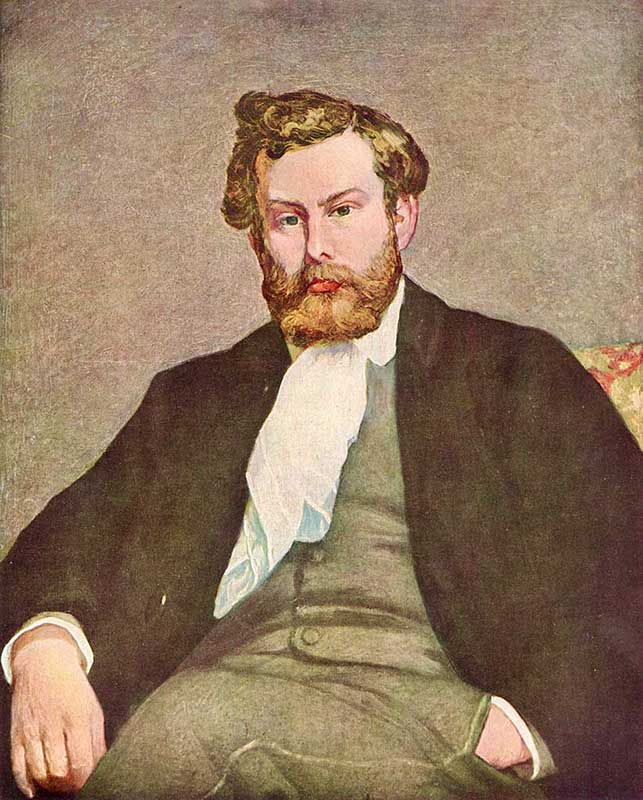
1865: Sisley paints with Renoir in the Fontainebleau forest, outside Paris. Avenue of Chestnut Trees, painted on the outskirts of the forest, is his most famous canvas from this period.
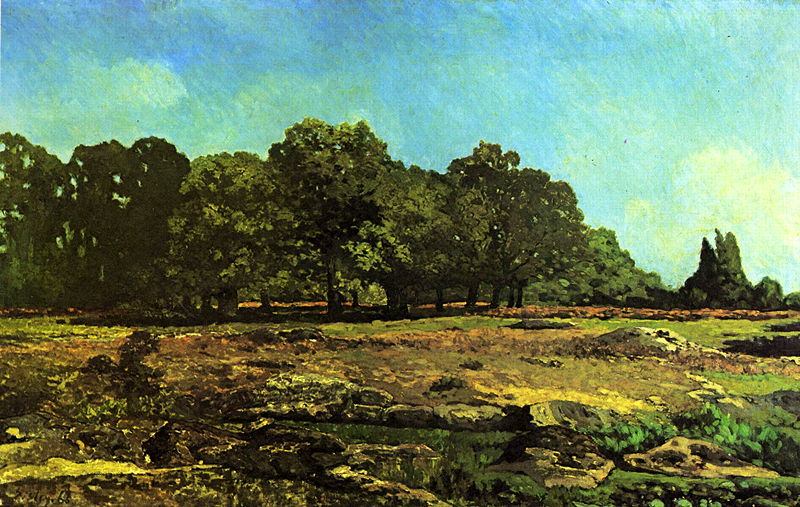
1866: Sisley exhibits two paintings at the Salon. He also strikes up a relationship with Eugenie Lesouezec. The couple have a son, Pierre, in 1867 and a daughter, Jeanne, in 1869.
Interesting fact...
Very few of Sisley's paintings from before 1870 have survived. Sisley left them in his Paris house in 1870 when he fled Paris at the onset of the Franco-Prussian war. The house was later ransacked by Prussian troops.
War, London and the First Impressionist Exhibition
1870: Sisley and his young family flee Paris at the onset of the Franco-Prussian war, moving to London. Claude Monet and Camille Pissarro do exactly the same thing. Monet and Sisley spend time together in London, paint a number of London scenes, and meet Paul Durand-Ruel (who was to become the impressionist's most important dealer).
1871: Sisley returns to live in the outskirts of Paris. The Franco-Prussian war has destroyed his father's business, and so the pressure is on to start selling paintings. He paints a number of works of the Port in Marly the next year, shown in flood after the Seine had broken its banks.
April-May 1874: Sisley participates in the First Impressionist Exhibition held by the impressionists as an alternative to trying to show their works at the Fine Art Academy's annual exhibition (more often than not, their works were rejected by the Academy's conservative jury). Though the exhibition attracted horrible reviews and resulted in few sales, Sisley sold five paintings for 1,000 francs - the most raised by any of the impressionists!
June 1874: Sisley returns to London and paints Moseley Weir, one of his best known works.
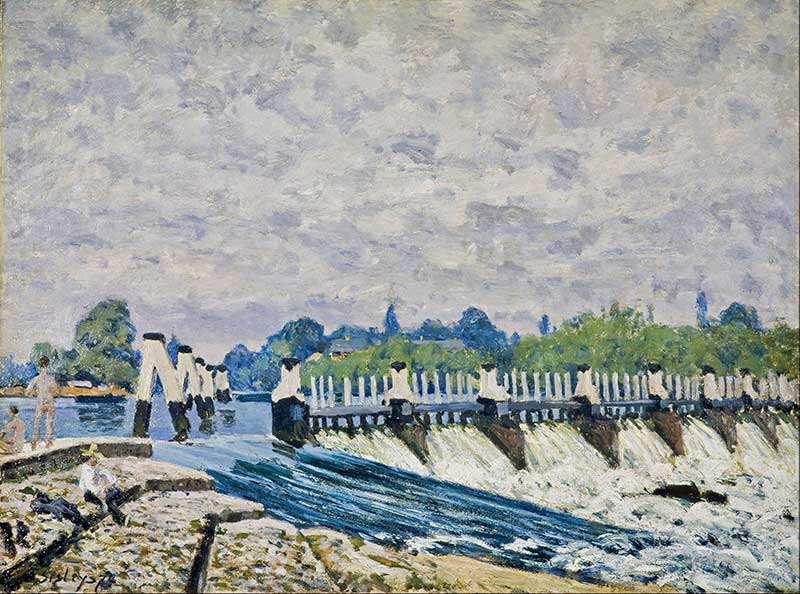
1876: Sisley exhibits at the Second Impressionist Exhibition.
1877: Sisley moves to Sevres, found on the Seine to the west of Paris, and exhibits at the Third Impressionist Exhibition.
Acceptance
1881: Sisley holds his first solo exhibition, at La Vie Modern in Paris. He also visits the Isle of Wight in the summer to paint.
1888: The French State purchases one of Sisley's paintings.
1890: Sisley is elected a member of the Academy des Beaux-Arts and shows in its annual exhibitions between 1890 and 1895.
February 1897: The Galerie George Petit in Paris holds a retrospective of Sisley's work.
July-October 1897: Sisley visits England for the last time. He marries Eugenie in Cardiff on 5th August.
1898: Eugenie dies.
29 January 1899: Sisley dies.

